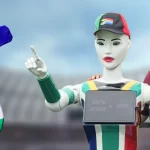In today’s digital age, artificial intelligence (AI) is rapidly transforming various industries. However, for AI to truly benefit society, it must be accessible to everyone. This is where multimodal chatbots come into play. By combining multiple input modalities, such as text, voice, and images, these chatbots can break down barriers and make AI more inclusive.
Bridging the Language Gap
One of the biggest challenges in making AI accessible is language barriers. Multimodal chatbots can overcome this by understanding and responding to multiple languages. This allows people from diverse backgrounds to interact with AI in their preferred language, making technology more inclusive and accessible.
Catering to Different Abilities
Multimodal chatbots can also cater to users with different abilities. For example, users who are visually impaired can interact with chatbots through voice commands, while those with hearing impairments can use text-based interfaces. This ensures that AI is accessible to a wider range of people.
Enhancing User Engagement
Multimodal chatbots offer a more engaging and interactive experience compared to traditional text-based chatbots. By combining multiple input modalities, these chatbots can better understand user intent and respond in a more relevant and personalized way.
Real-World Applications
Multimodal chatbots have the potential to transform various industries, including:
- Customer Service: Multimodal chatbots can provide 24/7 support, answer complex questions, and assist with troubleshooting.
- Education: They can offer personalized tutoring, answer questions, and provide feedback.
- Healthcare: Multimodal chatbots can be used to schedule appointments, answer patient questions, and even provide preliminary diagnoses.
Challenges and Opportunities
The development of multimodal chatbots is not without its challenges. Integrating multiple input modalities requires significant technical expertise. Additionally, ensuring that multimodal chatbots understand and respond appropriately to diverse user inputs can be complex.
However, the potential benefits of multimodal chatbots far outweigh the challenges. As technology continues to advance, we can expect to see even more innovative and sophisticated multimodal chatbots that will break down barriers and make AI accessible to everyone.
Conclusion
Multimodal chatbots are a crucial step towards making AI more inclusive and accessible. By breaking down language barriers and catering to users with different abilities, these chatbots can help bridge the gap between technology and society. As AI continues to evolve, we can expect to see even more innovative applications of multimodal chatbots that will transform the way we interact with technology.








